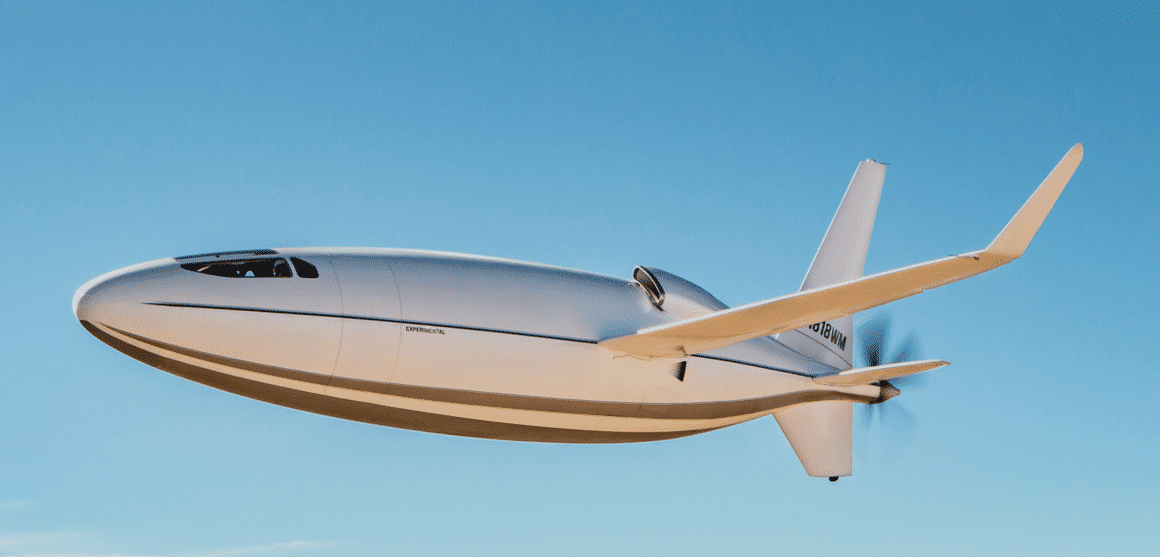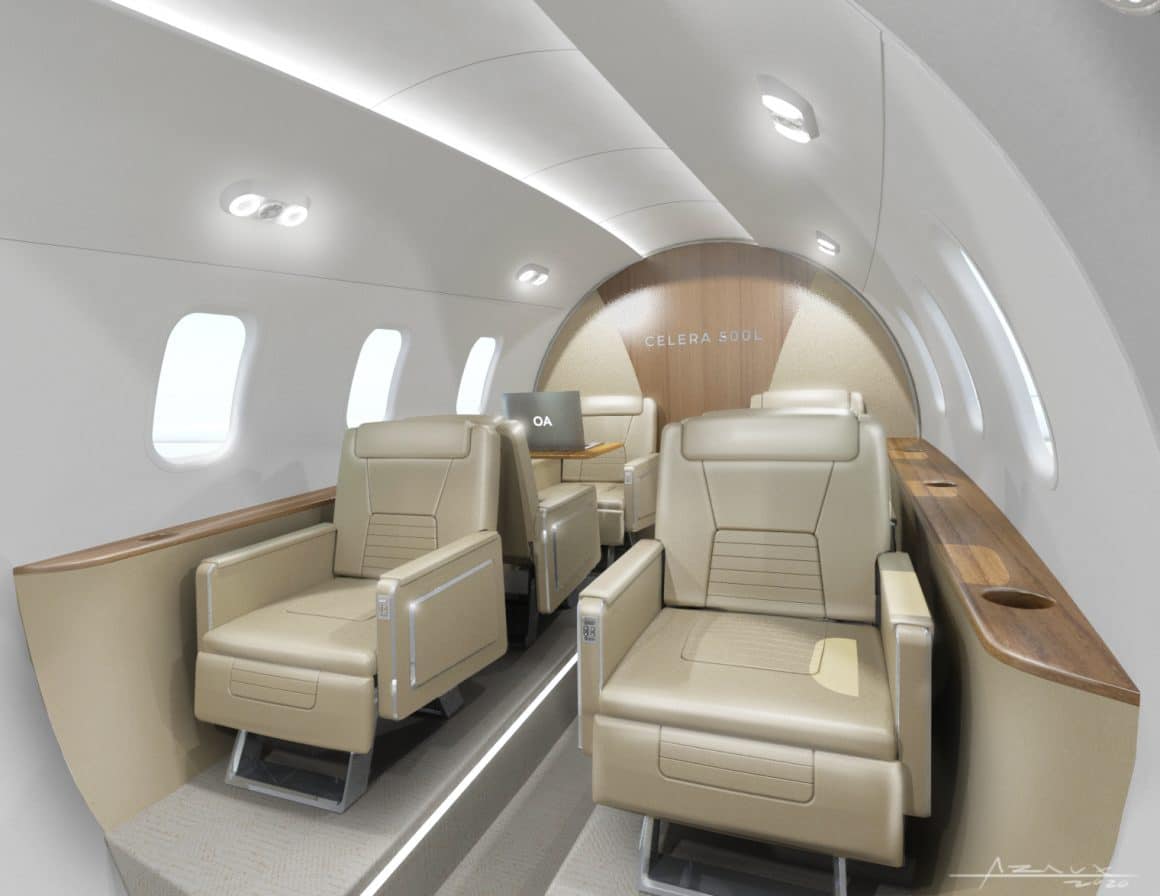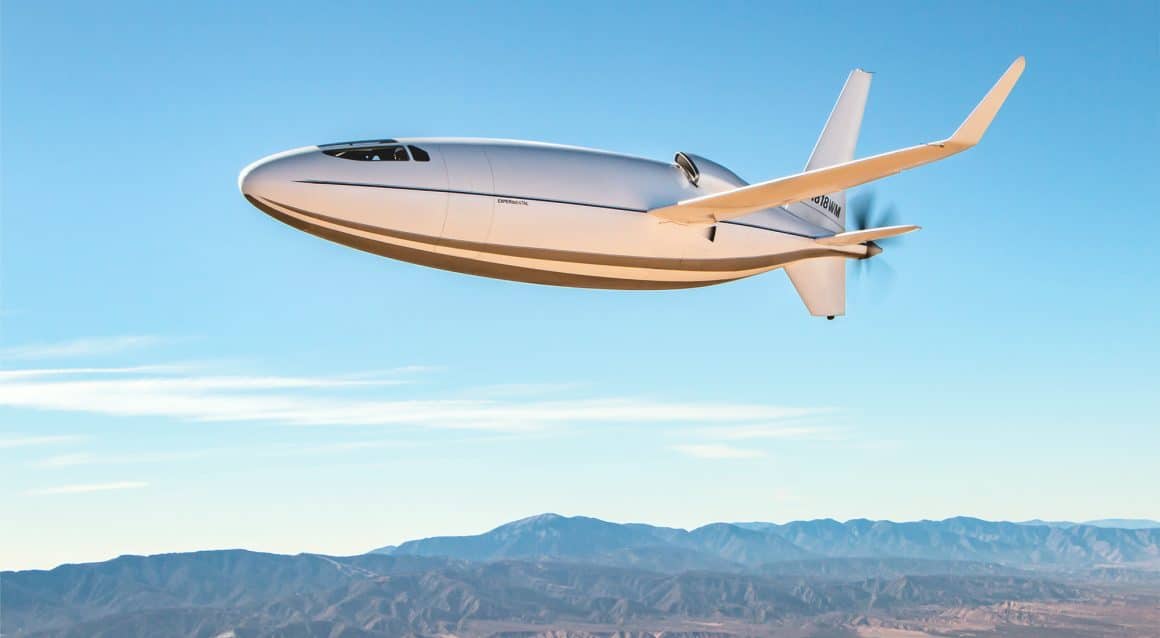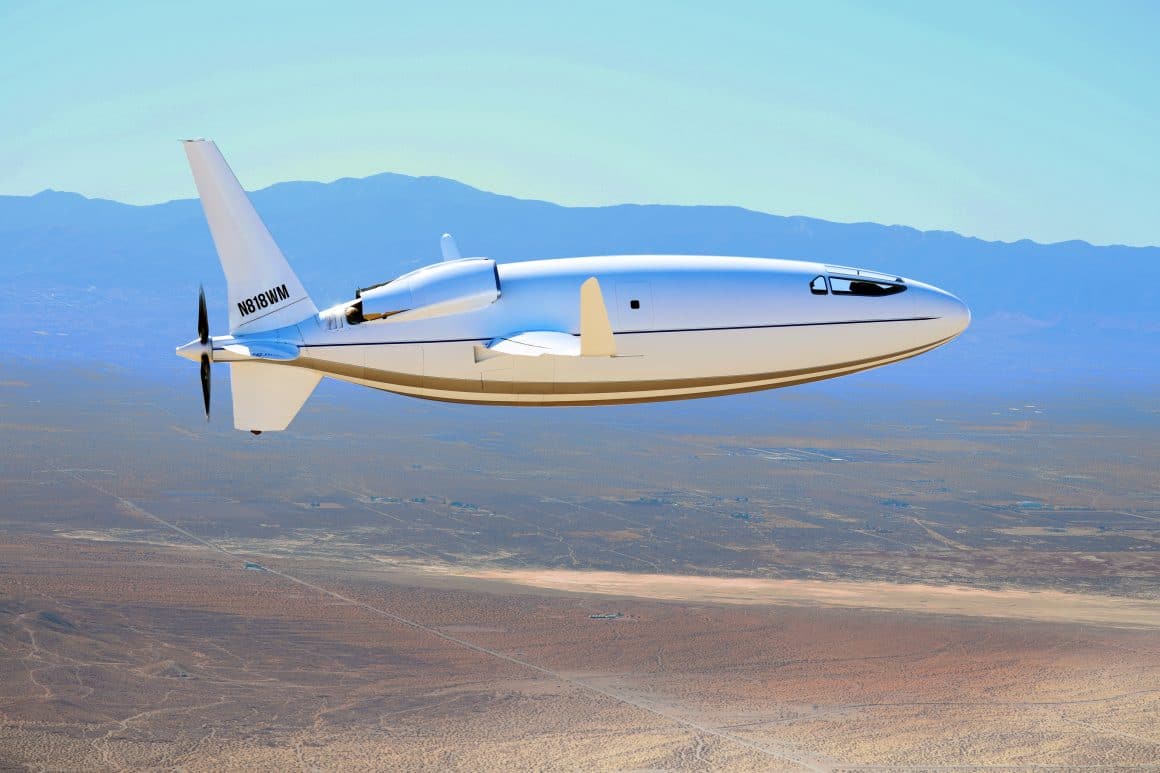Stealthy aircraft startup Celera stepped into the light with their new ‘bullet plane’. For the past few years, we’ve heard rumors of a super efficient aircraft that had an unusual blimp-like appearance with a pusher engine. On the surface, it looks a bit like a Burt Rutan inspired design, a bit like a fat Beechcraft Starship. Its reported efficiency might lead to a revolution.
For generations, the private flight market has been segmented into two groups. Private jet travel is the domain of oligarchs, celebrities and the rich. Small private planes were more a mix of hobbyists and small business owners who needed to travel to places on schedules and locations where airlines couldn’t accommodate. You either flew an airline at an affordable price or you ponied up large sums of cash for a private flight. There wasn’t much of a middle ground.
Enter Otto Aviation With a Potentially Revolutionary Solution

Otto Aviation’s ‘Bullet’ plane could be a game changer. By designing an aircraft that maximizes laminar flow (not just on the wings but the entire aircraft), the plane is able to achieve efficiencies that most engineers would only dream about.
According to Otto Aviation, their Celera 500L demonstration aircraft is able to fly at near commercial speeds with 8x lower fuel consumption, and a 5-7x lower operating cost than a comparably sized jet. The aircraft can fly up to 4,500 nm at a time. That range would put it in the same ballpark as a Boeing 737 MAX or A321NEO.
Otto Aviation lists on its website that the hourly operational cost is around $328. These efficiencies mean that a person could afford to rent a 500L with up to 6 passengers for about the same cost as a commercial ticket. This could be a game changer.
What is laminar flow and why is this a breakthrough?
No aircraft engineer designs a high drag aircraft. Drag leads to inefficiencies and additional cost. The ideal behind Otto Aviation’s Celera 500L aircraft is to minimize drag by keeping the airflow laminar or smooth across the body of the aircraft to the max extent possible. This is why the engine is at the rear of the aircraft and partially why there are less windows. The smooth body results in what the manufacturer is claiming as a 59% more efficient aircraft than a similar sized aircraft. The glide ratio is 22:1! That is closer in range to an inefficient glider than a business jet.
If Otto’s claims are true, they are saying that the Celera 500L can travel at speeds of up to 460mph on the equivalent of a V12 Red A03 550 horsepower engine that sips fuel at around 18-25 miles per gallon at cruise with seating for 6 and a 6 foot tall cabin. That is revolutionary.

The trend towards direct and smaller planes has been ongoing for the past 50 years
The shift to smaller, more nimble aircraft has been going on for a while. Otto Aviation might just be the next step. Back in the 1970s, the trend was towards large, intercontinental aircraft like the Boeing 747, DC-10 and L1011. The thought was that the skies and airports would become so crowded that larger airplanes would be required to shuttle passengers to large hubs where they could then connect to smaller destinations.
For the next 40 years, that theory largely held true. Even newer, more efficient jets like the Airbus A330, Boeing 777, and Boeing 747-400 became successful by serving large hubs. In the early 2000s, some cracks in this theory started to emerge. The Boeing 757 offered transatlantic service to connect smaller markets. The success of this offering and the growing range of the A321 and Boeing 737NG families opened up the door to more point to point service. These single aisle jets could now fly transcontinental and from the West Coast of the US to Hawaii with little problem. Then came the Boeing 787 (and the A350) which unlocked intercontinental travel between midsized markets.

With the Corona virus pandemic and focused development of the Airbus A321XLR and 737 MAX, the expectation is that the market will continue to move towards smaller aircraft that could fly point to point, bypassing major hubs. Jetblue’s founder, David Neeleman, is even building a new airline around the mid-sized A220 jet that can fly infrequently between small cities. The shift to smaller wide-body and single aisle jets is already happening. Jumbo jets like the venerable Boeing 747 and A380 are already being retired en masse.
The Bullet Plane Could Bring About The Next Shift To Small

Otto Aviation’s 500L (and larger 1000L) could be the next big shift in aviation. If you could fly privately between small airports affordably, an airplane could become more like an Uber than an all day ordeal. The ‘bullet’ plane could open up new markets. Imagine flying direct from Springfield, Illinois to Monterey, California for the weekend. Such a trip might not be challenging today without taking a day off of work. You’d likely have at least one connection. In the future, that trip could be just a four hour direct flight. Or consider the option to live in a small town like Tulsa and travel to Cleveland for a meeting. What would have been a two day business trip is now a single day out and back.
Can the ‘Bullet Plane’ deliver?
If Otto Aviation’s plane delivers on its promise of affordable private travel, it might also leads to a dramatic and almost unprecedented shift in air travel trends and society. Today, many business travelers and companies are located in large cities like Denver and Chicago and Dallas partly due to the transportation options. COVID-19 has already shown that a workforce can largely work distributed and at home. Still, one major advantage of living near a large city is the ability to travel, even if for pleasure.

We plan to stay close to this story. It’s an exciting development for aviation, one that could be as disruptive as the jumbo jet.

[…] 500 teaser) Related sources: https://edition.cnn.com/travel/article/celera-500l-plane/index.html Could the Celera 500L “Bullet Plane” Really Revolutionize How We Fly? https://en.wikipedia.org/wiki/Laminar_flow […]